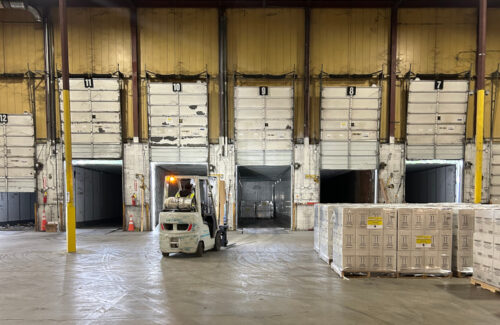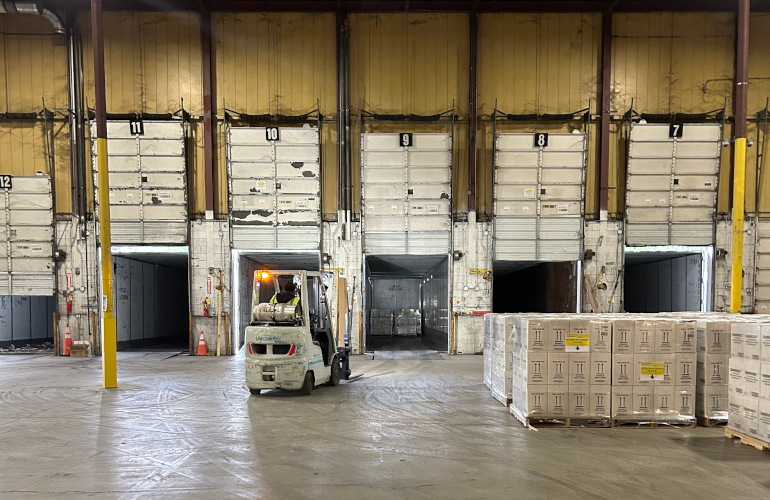
BroadRange Logistics
Solar projects 1 MW and larger that qualify for the investment tax credit (ITC) or production tax credit (PTC) and accompanying Inflation Reduction Act bonus credits aren’t finished overnight. Timelines for securing financing, completing design and permitting and actually installing a project are a measure of years, not days. Financiers looking to invest in IRA solar projects need the certainty that the tax credits will materialize and provide a solid return on investment. The “safe harbor” provision makes this possible.
Safe harboring allows companies to demonstrate a good-faith effort at starting a solar project to lock in the applicable tax credits in place that year. Once they secure the credits, they have four years to complete the project — known as the “continuity safe harbor.”
For the ITC or PTC, companies can safe harbor the credits two ways — either by physically starting the project or incurring 5% of the cost of materials for the project. The former method, often called the “physical work test,” applies either to onsite work or fabrication of custom equipment for the project offsite. Keith Martin, partner at law firm Norton Rose Fulbright, said utility contractors typically must start work on the site’s main power transformer to qualify.
For the 5% test, companies need to do more than just pay for equipment — those products must be delivered to them, and thus installed or stored, Martin said.
Safe harboring looks different for residential solar contractors than for utility-scale contractors. Residential contractors can claim these bonus credits for third-party owned systems, and will typically stockpile inverters or solar panels to secure the safe harbor.
“They don’t know when they’re stockpiling where the equipment will be used, but they use enough stockpiled equipment to get above 5%,” Martin said. “It’s been a little more careful for utility-scale [contractors] to have at least some idea where the equipment will be used when you’re buying it.”
The national residential installers most likely to take advantage of the IRA’s domestic content credits must think through some considerations before deciding which products to choose for safe-harbor. First, they need to ensure they have warehouse space to physically store those products. Next, they must choose a technology that will remain up-to-date over the four years they have to install the products.
Many of the major manufacturers with operations in the United States have announced safe harbor “partnerships” with national installers and financiers. SolarEdge announced such a partnership with Sunrun, and Enphase joined with IGS Solar.
Raghu Belur, chief product officer at Enphase, believes microinverters are a good safe harbor choice for their small size and remote updates. Whereas solar panel advancements happen quickly, microinverters operate on longer technological timelines.
“Because we are completely software-defined, there’s very little risk of any technology obsolescence,” Belur said.
Whether companies opt to start physical work or pay for 5% of the cost of materials, they must continuously work on the applicable project and finish it within four years.
“Both of those methods require the developer to make continuous progress on the construction of the project, and in the four-year continuity safe harbor requirement, to make sure that it’s built within a reasonable window after the construction begins,” said Lesley Hunter, SVP of policy and engagement at the American Council on Renewable Energy (ACORE).
Safe harbor outlook in 2025
Contractors rushed to lock in the safe harbor by the end of 2024 to take advantage of the current ITC bonus credits — including the 10% domestic content credit and energy community credit. The required percentages of domestic content needed to claim the credit are set to rise from the initial 40% by 5% every year until it holds at 55%, making it harder to secure every year. If owners are seeking the energy community bonus credit, a project could potentially fall in and out of that designation over the years depending on changes to the unemployment rate and fossil fuel-related tax revenues used to achieve the designation.
Companies were also eager to lock in current credits before any potential IRA changes under the new Trump administration, which have already been thrown into question after a series of executive orders.
“The reason to start construction last year is it’s hard to see how a new Congress in 2025 can disturb an option people had under the 2024 tax code to claim tax credits,” Martin said. “But now that we’re in 2025, everybody’s under these new tax code sections, and the Republican Congress is likely to either accelerate the phaseout of these tax credits under the new sections, or there has been talk about reducing the amount but allowing a higher tax credit if there’s enough domestic content.”
Contractors that were not ready to start construction last year are now racing to do so before early spring, when the House of Representatives Committee on Ways and Means is likely to begin reassessing the IRA.
“Anybody who starts construction before the tax bill starts moving, historically, has been grandfathered from the change as long as the project is completed within a certain period of time. So there are people who are still rushing to start construction early this year,” Martin said.

